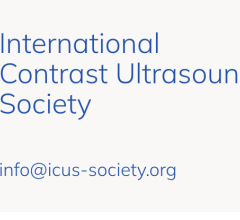May 29, 2007 – A noninvasive ultrasound procedure effectively shrinks uterine fibroids and significantly relieves fibroid-related symptoms in women, according to the results of a multicenter clinical trial reported in the June issue of the journal Radiology. Magnetic resonance-guided, focused ultrasound surgery (MRgFUS) allows radiologists to precisely target fibroids without harming healthy surrounding tissue.
“This treatment immediately stops blood flow in the treated fibroid tissue, which results in a significant, sustained decrease in symptoms for up to 12 months,” said the study’s lead author, Fiona M. Fennessy, M.D., Ph.D., assistant professor of radiology at Harvard Medical School and staff radiologist at Brigham and Women’s Hospital in Boston.
Uterine fibroids are benign growths of the muscle inside the uterus. According to the National Institutes of Health, at least 25 percent of women in the United States age 25 to 50 suffer from symptomatic uterine fibroids. Fibroid symptoms can include excessive menstrual bleeding, enlarged uterine size, frequent urination, pelvic pressure or pain and infertility. According to the National Women’s Health Information Center, fibroids are the primary reason for surgical removal of the uterus, accounting for approximately one-third of hysterectomies performed annually in the U.S.
MRgFUS represents a noninvasive, outpatient alternative to hysterectomy. “This treatment is ideal for older women who have completed their families and have a single or limited number of fibroids,” said co-author Clare M. Tempany, M.D., professor of radiology at Harvard Medical School and director of Clinical Focused Ultrasound at Brigham and Women’s Hospital.
The researchers studied 160 women with symptomatic fibroids. The women received pre-treatment MR imaging to identify and define the target fibroids. Radiologists then used MRgFUS to locate and treat the targeted fibroids while monitoring temperature changes in tissue.
Ninety-six patients were treated under the original study protocol (A), and 64 patients were treated under an optimized protocol (B). Protocol A allowed a maximum treatment time of 120 minutes and a maximum fibroid treatment volume of 100ccs (roughly six centimeters (cm) in diameter), or up to 33 percent of total fibroid volume. Protocol B allowed a maximum treatment time of 180 minutes and maximum fibroid treatment volume of 150ccs (about seven cm in diameter), or up to 33 percent of total volume in subserosal fibroids (those on the outer wall of the uterus) and 50 percent of volume in non-subserosal fibroids.
“Through this study, we’ve learned that MRgFUS can be optimized with newer protocols to have even better results than previously thought possible,” Dr. Tempany said.
The findings showed significant symptom relief at three months and sustained relief at one year. Women treated with the optimized protocol reported greater symptom relief and quality of life improvement than those treated with the original protocol. No serious adverse effects were reported.
“We have shown that treating fibroids with an optimized, less restrictive protocol allows for treatment of a greater fibroid volume, which results in even greater symptomatic relief at clinical follow-up,” Dr. Fennessy said.
Source: RSNA Media Relations
Linda Brooks
1-630-590-7738
lbrooks@rsna.org


 April 16, 2025
April 16, 2025 








